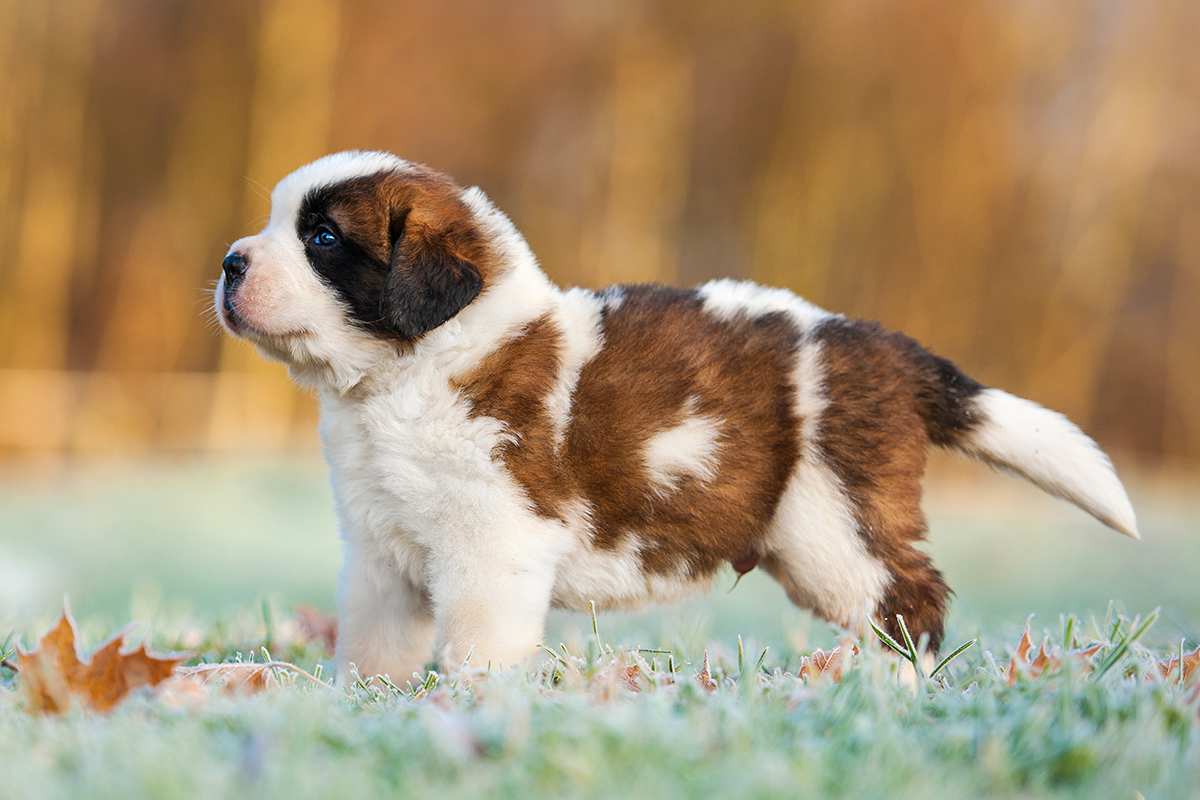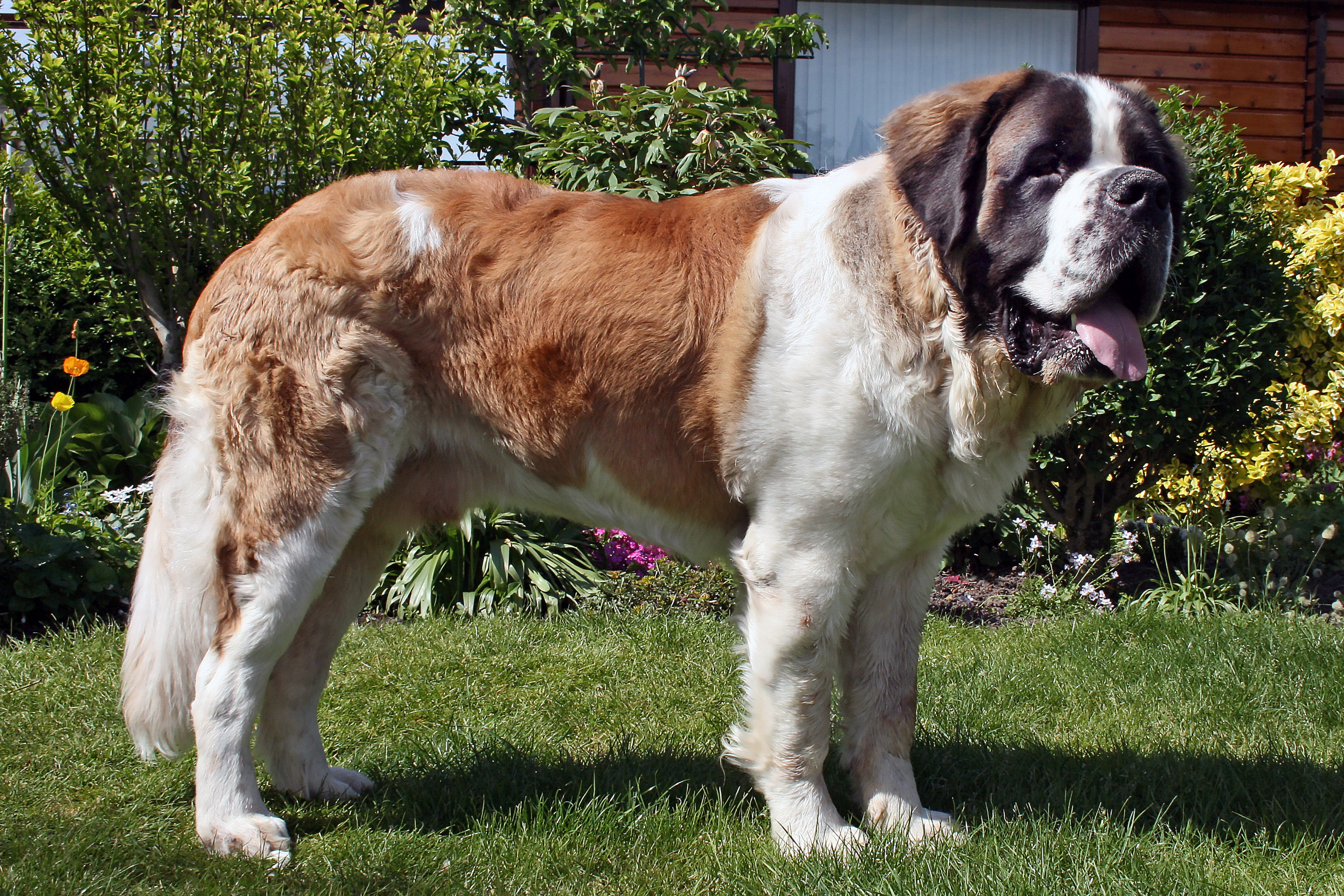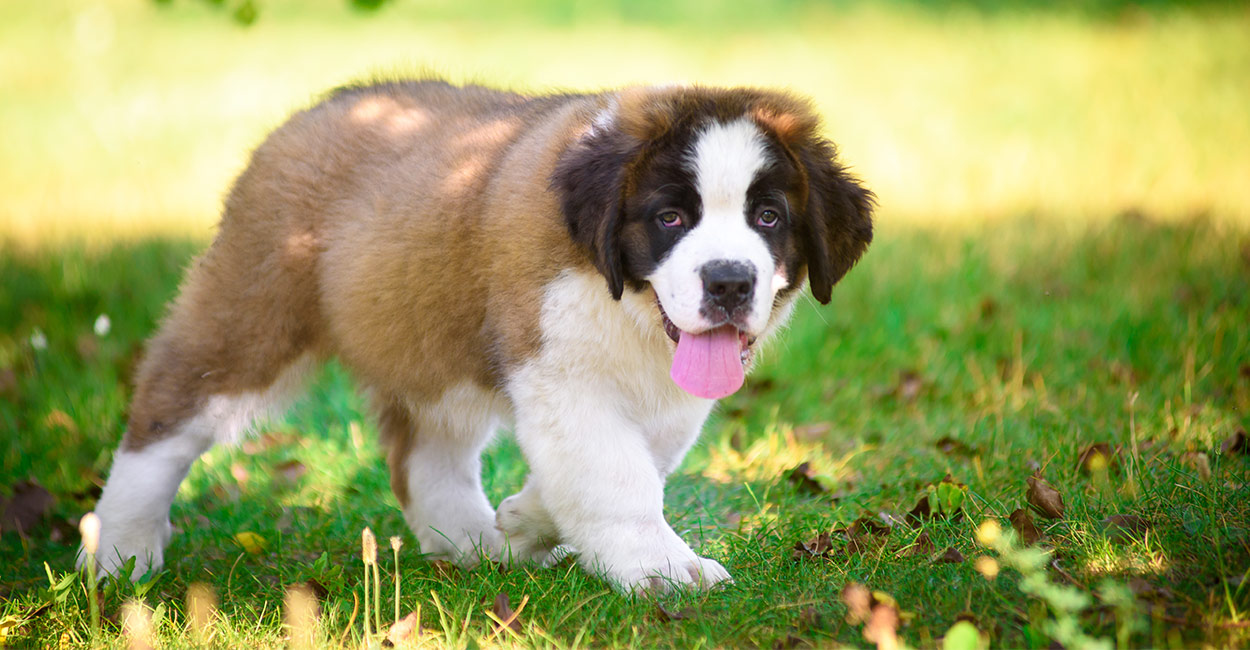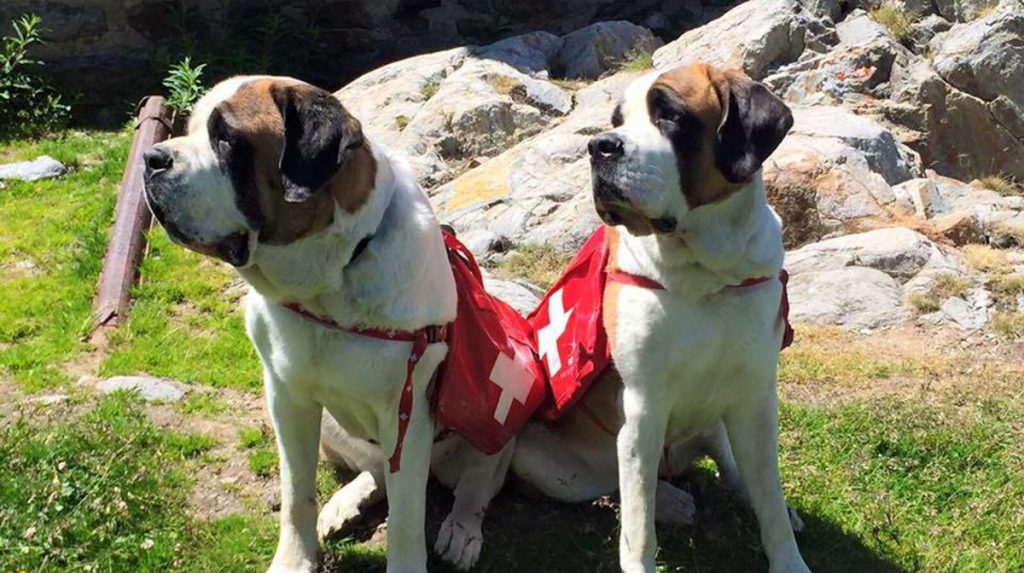
Saint Bernard Dog Breed | History, Health & Characteristics
It is probable that, in common with other giant breed dogs, Saint Bernard originates from ancient Tibet, where Tibetan Mastiffs guarded the monasteries. These dogs were acquired by other races and used as hunting and war dogs.
Alexander the Great probably introduced giant dogs to Europe. When Pyrrhus, heir of Alexander and King of Epirus, introduced the dogs to Italy, subsequently, the Romans called the dogs Molossus, after the town of Molossis in Epirus.

Saint Bernard is believed to be descended from the heavier of the Molossus types. Since the first century AD, they developed relatively purely in the isolated Swiss Valais region.
It is known that they were used for mountain rescue work at least since the 1700s by the monks of the Hospice Of the Great St Bernard; this Hospice was founded on the instruction of Archdeacon Bernard de Menthon to provide shelter and protection for travelers.
Characteristics Of Saint Bernard Dog
The Saint Bernards of the 21st century are truly giant dogs; adult weights of between 60-80kg are normal, not including those which are clinically obese. With the tenacity and courage to sit out an avalanche, this is not an easy first dog for a novice owner.

When a Saint Bernard makes a decision, it tends to act on it with unshakeable conviction, and as it is physically stronger than any human, it is important to bring this dog up to be a good decision-maker. Thus, early socialization and habituation are critical.
This should start with the breeder rearing puppies in the house where they learn to cope with normal household events and handling them daily so they are confident with people, and continued by the buyer throughout the socialization period. A timid or fearful St Bernard is not a safe pet. St Bernards also tend to be very boisterous, so may not be the ideal dog for a family with young children.
Saint Bernard comes in a variety of red-brown colors, from orange to mahogany, with dark shadings around the eyes and ears, and the following white markings; muzzle, blaze on face, collar, chest, forelegs, feet, and end of the tail. Greater amounts of white on the body lead to dogs being called splash coat, while those with large patches of white in the brown mantle on the back are described as a broken mantle. Spots of color in the whites are called ticking and undesirable according to the Standard.
Two coat types are seen; smooth, which is short and flat, and rough which tends to be longest on the feathering of the tail and at the back of the legs. Coat length and thickness varies, and the term rough-smooth can refer to a dog of midcoast.
If considering buying a puppy for show, it is worth reading the current English Breed Standard first. In recent years, partly attempting to improve health, the Kennel Club has made changes to the Standard; breeders will use the phrases English or American or Continental type, and these all reflect different body shapes, but can also be linked with temperamental differences. Also, until recently, it was a show requirement in the UK for rear dewclaws to be removed. This is currently optional, although most breeders still remove dewclaws.
Health Of Saint Bernard Dog
Skeletal, heart and eye problems are significantly common in St Bernards. Hip and elbow scoring schemes exist for KC reg dogs over 12 months of age. Hearts can have a variety of disorders, some of which would not show up for several years, but some murmurs can be detected from puppyhood. Breeders can have dogs checked by cardiologists and certificated murmur-free.

Entropion and ectropion (too loose and too tight eyelids) are eye problems caused by selecting for certain head types; these problems can sometimes be seen in the very young pup, but as heads develop slowly in St Bernard, early surgery may not be the right course of action.
Choosing to buy from breeders who health test and only breed from dogs with good results can reduce the odds of buying a puppy with problems, but even adult dogs with excellent hip scores can produce a dysplastic puppy. The health testing simply shows the breeder cared about trying to breed healthy pups; it would still be strongly recommended that health insurance was budgeted for when buying a Saint Bernard.
Bloat, or gastric torsion, is a dangerous condition which St Bernards are prone to, along with other deep-chested breeds. The stomach twists and the condition is usually fatal if not addressed immediately, usually by the operation. Therefore, all St Bernard owners should research this condition, as early veterinary attention is essential.
